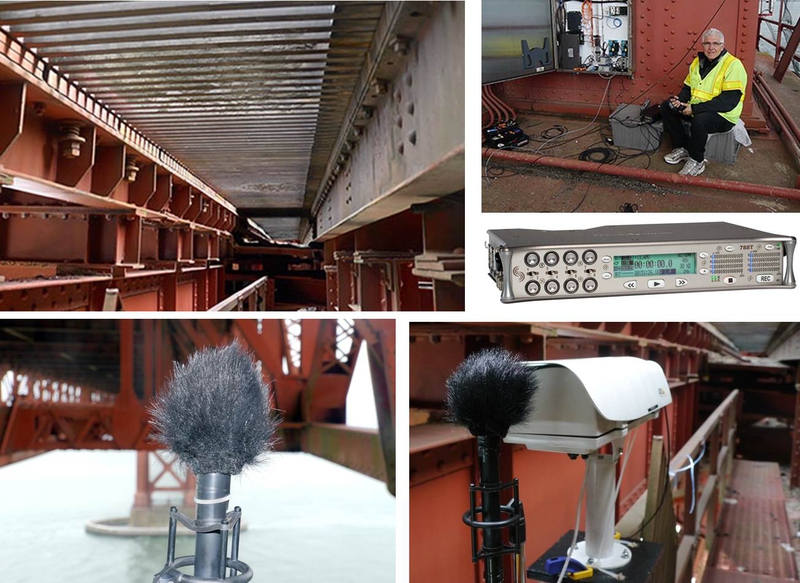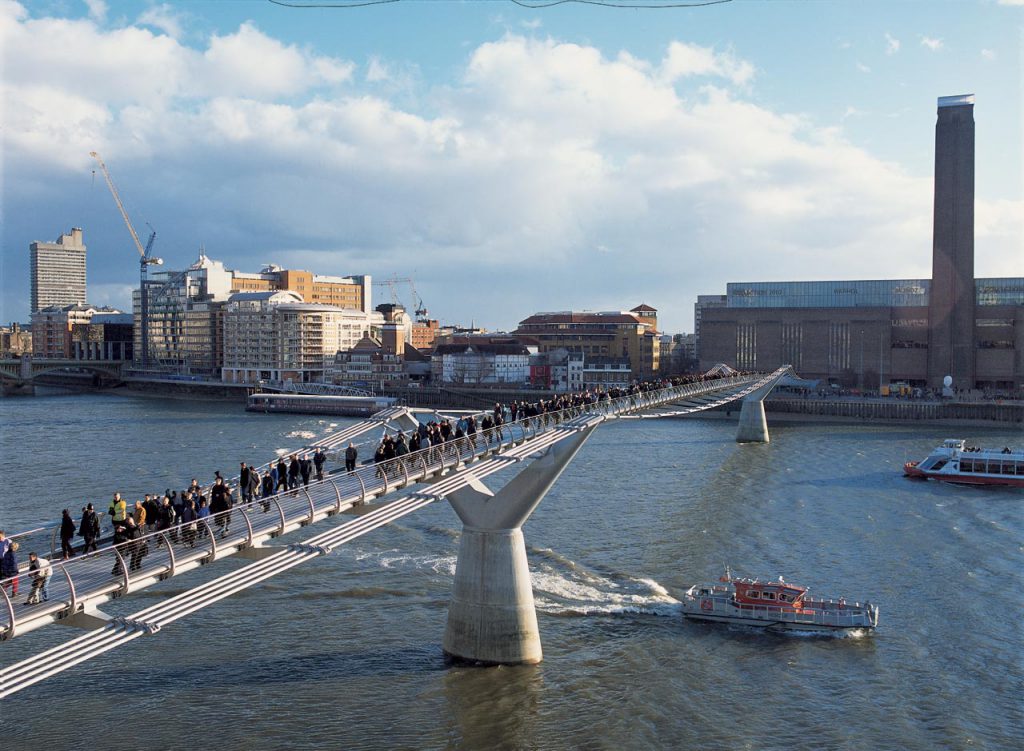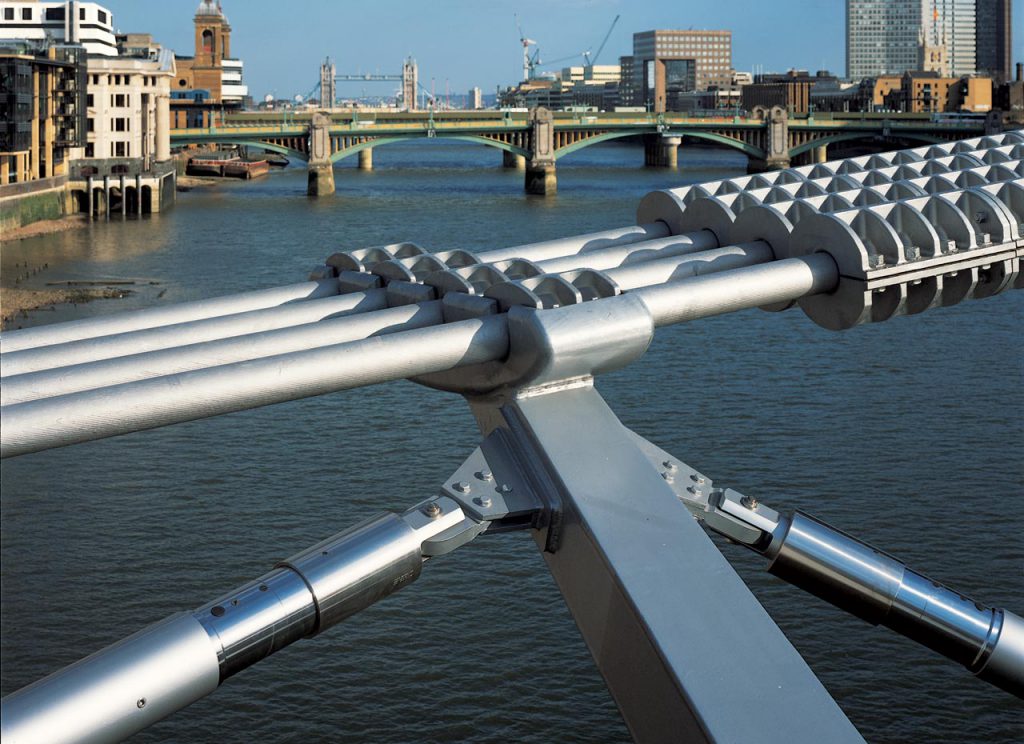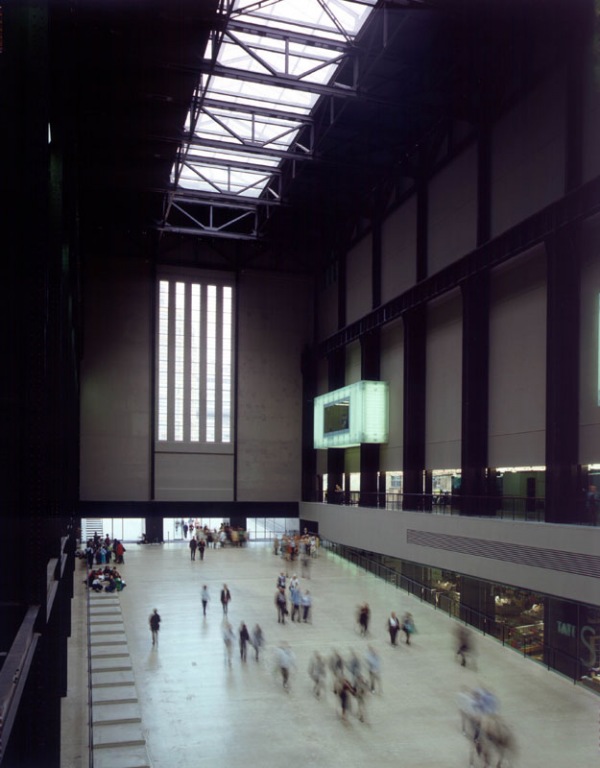Take a walk through nature and you can easily hear the musical noises of birds chirping or rustling trees. Many people have found their surroundings to be sources of harmonic noises, but Bill Fontana focuses on specific interactions within urban architecture in his sound art. For Fontana,
“the world at any given moment is a potential musical system.” (see below video)
Born in 1947 in Cleveland Ohio, Fontana is now an internationally known artist and composer of experimental sound sculptures.
Since his first sound sculpture in 1976, Fontana has elicited a connection between his audience and their urban environment by drawing out the living sounds of bridges, machinery, transportation, and structures in his acoustical visions. Wikipedia defines sounds sculptures to be art forms, commonly sculptures, that produce sounds, OR the reverse so that sound creates a sculpture. In a sense, the audio and visual elements of his explorations create each other, sound making an image and an image making sound. Sound is elevated to give audiences a new perspective of the visual environment in which the sculpture exists. Rudolf Frieling, the Media Arts Curator at SFMOMA since 2006, described these acoustical visions best, as…
“an audiovisual field recording, enhanced and abstracted in real time or in post-production [in which s]ound and visuals support each other[ and] no leading or supporting role can be identified in this interaction.”
In many of Fontana’s pieces he finds living sounds through everyday architecture or found spaces, inspired by Marcel Duchamp’s concept of ready-made objects. Of paradoxical nature, the installation Distant Trains reconstructs a historic train terminal in Berlin destroyed in the during World War II by projecting live sounds from another train station in the space. The space seems to create the sound just as the sounds creates a “new” space.

His piece Acoustical Visions of the Golden Gate Bridge channels the energy of cars and surrounding fog horn and boat sounds recorded from strategically placed sensors. Recorded sounds are heard from inaccessible vantage points and the live camera view is watched from a remote location to experience a situation in entirely new context with unpredictable audio and visual.
Watch Acoustical Visions of the Golden Gate Bridge here: https://www.nytimes.com/video/arts/design/100000001588737/bill-fontanas-acoustical-visions.html
My favorite art piece of Fontana’s is his 2006 piece Harmonic Bridge, a beautiful piece containing sounds from the inner workings of the Millennium Bridge in London. The bridge is alive through vibrations that result from the bridge’s dynamic movements caused by footsteps, wind, and cars. If I had been listening in person, I think I could have stayed in the Tate Modern gallery, where the living acoustic sculpture was exhibited, for a while. The sound was slightly recognizable with distinct moments sounding very much like a stringed instrument. The Tate Modern even describes the bridge as a vast stringed instrument as you listen throughout the space. Most importantly, the sculpture is captivating because the sounds come from a place humans are incapable of reaching without technology like the accelerators Fontana uses. Alan Riding of the NY Times puts the the piece into words perfectly:
“rising and falling, always different, at once strange and familiar, mysterious and evocative, hypnotic and sensual.”
As we start discussing contemporary sound artists, the connection to the forerunners in sound art is clear. Fontana strays from synchronization of his audio and visual elements just as Edgard Varese created infinite harmonic possibilities across unpredictable planes. To Fantana,
“the act of listening is a way of making music”,
reflecting the significance of silence and listening to our surroundings in John Cage’s work. I think that if after experiencing one of Fontana’s sound sculptures we leave with different perceptions of a certain urban space, then Fontana would be satisfied. Because ultimately, sound art is about creating a new experience that is only achievable with innovative technology and original methods of composing—whether Luigi Russolo’s noise machines, Varese’s organized sound, or Cage’s chance compositions. For Fontana, it happens to be his experimental placement of recording devices, the displacement of sound, and his fascination with “the found object” that supplies this new experience.





This is a superb essay! I liked the way you connected the various composers and artists we have been studying, situating Bill Fontana’s work within that lineage. Excellent. And an interesting link between Varese and Fontana in terms of how they sought new harmonic relationships, such as in Bill Fontana’s Harmonic Bridge, which truthfully is a very beautiful piece, unveiling all the invisible sounds we never get to hear.